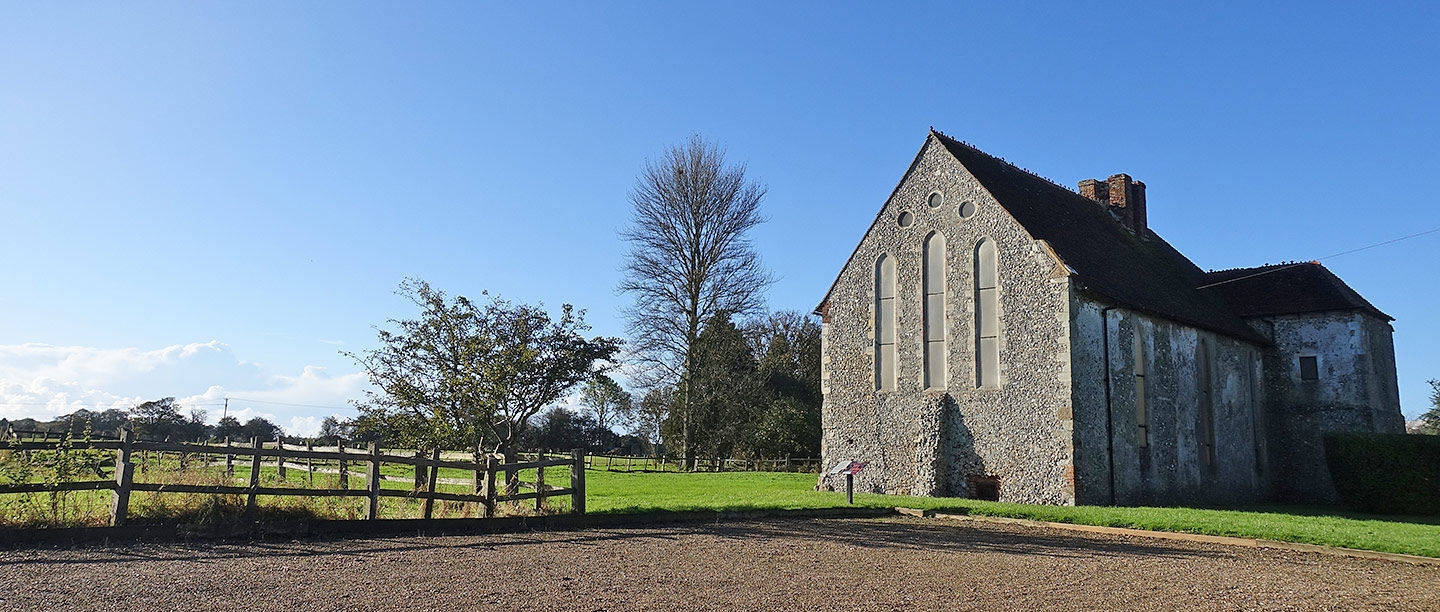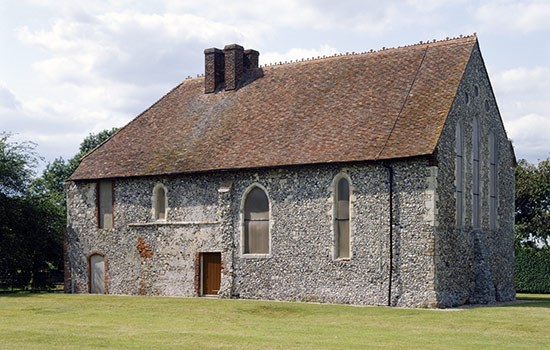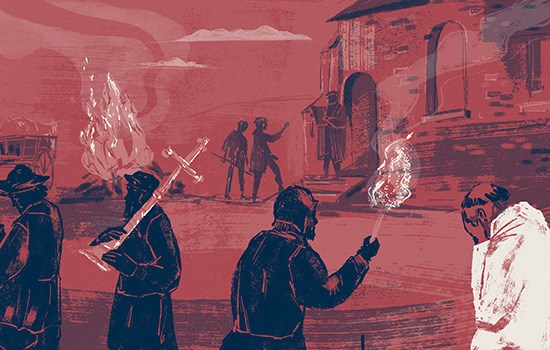The Knights Hospitaller
The Knights Hospitaller were founded after the First Crusade (1096–9) and the crusaders’ capture of Jerusalem in 1099. A group of crusaders formed a religious order to support a hospital in the city, dedicated to St John the Baptist, which had been founded earlier to care for Christian pilgrims. With endowments from its new governors, the hospital developed rapidly. More of a hospice than a medical establishment, it cared for people and made them comfortable.
The new Order of the Hospitallers of St John of Jerusalem was officially recognised by Pope Pascal II in 1113. The Hospitallers observed the principles of St Augustine, taking vows of poverty, chastity and obedience, and placing the welfare of the community above themselves.
Their caring role soon broadened to a military one, protecting pilgrims on their way to the Holy Land. Eventually the order created a powerful military force to defend Christianity in the eastern Mediterranean and Middle East. The Hospitallers adopted a white eight-pointed cross as their distinctive emblem.
The order flourished in Jerusalem until 1187, when the Ayyubid sultan, Saladin, captured the city. Afterwards, its headquarters was briefly in Cyprus, then Rhodes until 1522 and later Malta, until Napoleon captured the island in 1798.
Today, several organisations maintain the Hospitaller tradition, and their cross remains an international symbol of first aid, notably as the emblem of St John Ambulance.
The commanderies
The order acquired property across Europe by gift and endowment, the profits going to support their work in the Holy Land and eastern Mediterranean. Communities of brethren and sisters administered the Hospitaller estates, which functioned like medieval lordly agricultural estates, or manors.
The first Hospitaller community in England, founded around 1144 at Clerkenwell, London, became its English hub, or the ‘Priory of England’. By the mid 14th century, over 30 communities had been established in England. Hospitaller estates often had centres called commanderies or preceptories (after the commanders or preceptors who led them), though some estates were managed from a distance. The communities raised funds, provided hospitality for pilgrims and recruited new members.
Only a few in each community were knight-brothers, including the commander. He was responsible for running the agricultural estate as well as for overseeing the religious life of the resident community, which at Swingfield may have included other knights, sergeants-at-arms, chaplains, clerks, craftsmen, labourers and servants. Service in the East was essential for those knight-brothers seeking to become commanders. Some other knight-brothers served abroad, but otherwise many English brothers and sisters never went overseas.
St John’s Commandery
The community of St John’s Commandery, also known as Swingfield Preceptory, was originally established for sisters of the order, who were devoted to prayer and nursing the sick. However, in 1180 all the English sisters were assembled into one community, at Buckland in Somerset. Swingfield then became a male establishment, though a few women may have been in residence thereafter, as this was permitted by the order.
According to a census of the order taken in 1338, the community at St John’s then comprised a knight-commander, a squire, three chaplains, two clerks, six officials and servants, two ‘lads’, a page and a corrody holder (someone entitled to accommodation, in recognition of gifts to the order).
The commandery had similar buildings to those of a medieval manor. The main difference was its monastic character, which meant that there were communal living facilities and a chapel for daily services. A survey made in 1529 listed its buildings, including a gatehouse, a hall, two parlours, a study, chambers, two galleries, a pantry, two butteries, a pastry, a kitchen, a longhouse with a slaughterhouse and piggery, a malt kiln and malthouse, a storehouse, a stable, a great barn and a dovecote.
There was also an orchard, a pinfold (an enclosure for animals), a pond and a garden. Some land was farmed close by, but the estate also included land and woods at Ewell (near Dover), Bonnington (on the edge of Romney Marsh), and Oare (near Faversham).
The Dissolution and after
In 1540, during the Dissolution of the Monasteries, Swingfield was suppressed and surrendered to the Crown. The commandery and its estate initially came into the hands of the entrepreneurial Anthony Aucher, a protégé of Thomas Cromwell. Aucher served Henry VIII in many capacities, including as a Commissioner for the Dissolution in Kent, as auditor and surveyor of the estates of Christ Church Priory, Canterbury, and as paymaster and surveyor of the royal works at Dover.
Many of the commandery’s buildings were gradually lost following the Dissolution, but the chapel survived and was converted to residential use as a farmhouse. Floors were inserted across the former chapel and a large chimneystack was built towards its western end. Casement windows replaced the medieval windows in the north wall, and at some point, the exterior of this wall was rendered so that it resembled a fashionable brick façade, traces of which remain visible.
The chapel remained part of the farmhouse until the 1960s. Extensive conservation work was carried out on the building in the 1970s, which included the removal of floors and partitions to restore the open space of the chapel.
The chapel today
The chapel at Swingfield is the only surviving building of the commandery. It was built mainly of local flint and Kentish ragstone. Although substantially structurally complete, its modern appearance betrays its post-Dissolution use as a farmhouse and its subsequent restoration in the 1970s.
The building can be dated to around 1230, primarily by its architectural detailing. For example, the three tall lancet (pointed) windows in the east wall are typical of the early 13th century. Special attention was paid to these windows because they were directly above the altar, the focus of devotion when Mass was celebrated. They have shafts (columns) and continuous mouldings around their heads. Above them there were originally three oculi (round windows). These are now blocked internally, but their shape can be made out in the wall plaster, and they are still visible externally.
In the south wall the medieval windows survive, but the three medieval-style windows in the north wall date from the 19th century.
One of the most impressive features of the chapel is its crown-post roof. Ring-dating of the timbers has shown that they were felled between 1395 and 1405, which means that this roof replaced an earlier one. The three original round windows in the east wall were blocked when the new roof was installed.
Although now empty and with bare limewashed walls, the medieval chapel was the most richly decorated and furnished room in the commandery. An inventory of 1529 records that its floor was ‘well paved’ and that it contained a curtained reredos (screen) behind the altar, paintings of several saints, a private pew for the commander and finely carved stalls. The modern floor timbers mark the stalls’ positions.
The elaborate recess in the south wall was for a piscina, a stone basin where the vessels used in the Mass were washed. Opposite, in the north wall, is an aumbry (cupboard), where communion vessels were kept. Small brackets high on the walls probably supported religious images or statues. A cellar under the east end of the chapel was inserted in the 16th century or later.
In contrast to the open space of the former chapel, the west end of the building is partitioned into several rooms on two floors. This is a later arrangement which encroached into the area of the chapel and was possibly the work of its last commander, Sir John Rawson, in the early 16th century. It includes, on the ground floor, a narrow passage from a porch (which is probably 14th-century), forming the entrance to the building on the north side, and leading to another room with a fine 16th-century ceiling. Modern stairs in the chapel rise to a first-floor gallery and chamber.
These spaces were probably created to provide privacy for St John’s commander.
By Paul Pattison and Roy Porter




